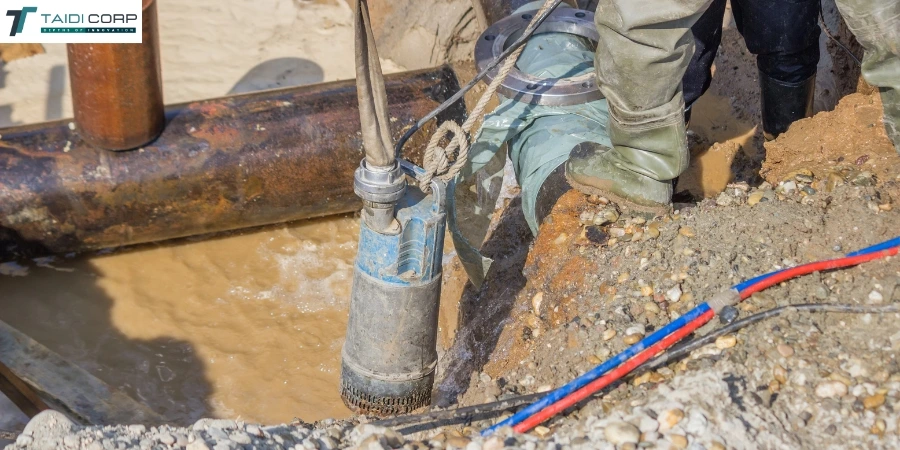
Proper sewage pump installation is essential for maintaining an efficient and functional home sewage system. Whether you’re replacing an old pump or setting up a new one, the process can seem daunting. But with the right tools, preparation, and guidance, it’s a task that many DIY enthusiasts can tackle confidently.
This guide will walk you through the entire process of installing a sewage pump, empowering you to handle the installation safely and efficiently. From choosing the right pump to testing and troubleshooting, you’ll find everything you need to get the job done right.
Overview of Sewage Pump Installation
What Is a Sewage Pump, and Why Is Proper Installation Crucial?
A sewage pump, also known as a sewage ejector pump, is designed to move waste from lower levels of your home, such as a basement, to the main sewer line or septic tank. It plays a crucial role in your home’s plumbing system by preventing waste buildup and backups, ensuring smooth and sanitary waste removal.
Proper installation is essential to avoid common issues like backflow, pump failure, and electrical hazards. Following this guide ensures that your pump is set up to function optimally and safely for years to come.
Purpose of This Guide
The goal of this guide is to empower homeowners like you with clear, easy-to-follow instructions for installing or replacing a sewage pump. Whether you’re a seasoned DIY enthusiast or just starting out, this step-by-step guide will help you install your sewage pump with confidence.
When to Call a Professional
While this guide aims to help with a DIY sewage pump installation, there are times when professional help is necessary. Consider hiring a professional for:
- Complex plumbing layouts with multiple pumps.
- Electrical wiring that requires more expertise than simple plug-ins.
- Frequent pump failures or if troubleshooting doesn’t solve the problem.
For those needing professional services, visit TAI Engineering for expert advice and help.
Pre-Installation Preparation
Tools and Materials Needed
Before diving into the installation process, make sure you have all the tools and materials ready. Here’s what you’ll need:
Tools:
- Wrench set
- PVC pipe cutter
- Screwdriver
- Level
- Utility knife
- Teflon tape
Materials:
- Sewage pump
- Discharge pipe
- Check valve
- Basin and cover
- PVC pipes and fittings
Safety Precautions
Safety should always be a priority during any DIY project, especially when dealing with plumbing and electrical systems. Make sure to:
- Turn off the power supply to avoid electrical hazards.
- Shut off the water source where necessary.
- Wear protective gear such as gloves and safety goggles.
Choosing the Right Pump
Selecting the right sewage pump for your home is essential to ensure long-term efficiency. Here are a few factors to consider when choosing a pump:
- Capacity: Ensure the pump can handle the volume of waste your home produces.
- Lift Requirements: Consider how high the pump needs to lift the sewage to reach the main sewer line.
- Pump Type: Choose between a standard sewage ejector pump or a grinder pump, depending on the type of waste and the layout of your system.
Step-by-Step Sewage Pump Installation Guide
Step 1: Remove the Old Pump (if applicable)
- Turn off the power to the pump at the breaker box.
- Disconnect the old pump from the discharge pipe.
- Carefully remove the old pump from the basin.
- Clean the basin to remove any debris or residue left behind.
Step 2: Prepare the Basin
- Position the basin in the desired location, ensuring it is level.
- Secure the basin to the floor if needed to prevent movement.
- Check the basin for any cracks or defects before proceeding.
Step 3: Install the New Sewage Pump
- Attach the necessary fittings to the sewage pump, including the discharge pipe.
- Lower the pump into the basin carefully, making sure it is aligned properly.
- Ensure that the float switch has enough clearance to operate freely.
Step 4: Connect the Discharge Pipe
- Attach the discharge pipe to the pump’s outlet using Teflon tape to secure a tight seal.
- Install a check valve on the discharge line to prevent any backflow into the pump.
- Extend the discharge pipe to the main sewer line or septic system connection.
Step 5: Electrical Connections
- If your pump is plug-in, connect it to a dedicated GFCI outlet.
- For hardwired pumps, refer to the manual for specific electrical wiring instructions.
- Test the float switch to ensure it activates the pump correctly.
Step 6: Test the Pump
- Pour water into the basin to simulate normal use.
- Observe the pump’s cycle, ensuring that it pumps the water out and that the check valve prevents backflow.
Step 7: Secure and Seal the Basin Cover
- Place the cover over the basin and secure it with screws.
- Seal any gaps around the cover to prevent odors and gas from escaping.
Common Installation Mistakes to Avoid
Incorrect Pump Sizing
Choosing a pump that’s too powerful or too small can lead to inefficient operation or even damage to the system.
Improper Float Switch Placement
Ensure the float switch has plenty of clearance to prevent it from getting stuck or not engaging properly.
Lack of Check Valve Installation
Without a check valve, sewage can flow back into the basin, overloading the pump and causing potential damage.
Post-Installation Checklist
- Double-check all connections for leaks.
- Test the pump over several cycles to ensure continuous, smooth operation.
- Verify that the check valve is functioning correctly and preventing backflow.
Maintenance Tips for Longevity
To keep your sewage pump running smoothly, regular maintenance is key:
- Inspect the pump and basin every few months for any debris or blockages.
- Test the float switch periodically to ensure it’s functioning properly.
- Schedule annual professional inspections to catch any potential issues before they become costly repairs.
When to Seek Professional Help
Sometimes, the job can be more complex than anticipated. Consider calling a professional in these situations:
- Multiple pump systems or complicated plumbing layouts.
- Electrical issues beyond basic plug-in setups.
- Persistent problems with pump performance despite troubleshooting.
If you’re unsure about any part of the installation process, reach out to a professional service like TAI Engineering for expert advice and assistance.
Conclusion
Installing or replacing a sewage pump is an achievable DIY project when approached with proper planning, safety measures, and the right tools. Taking the time to do it correctly will ensure your home’s sewage system operates efficiently and reliably for years to come. If at any point you feel uncertain, don’t hesitate to consult a professional.
We’d love to hear from you—whether it’s sharing your experience, asking questions, or seeking further advice. Leave a comment below, and let’s keep the conversation going!
